Cambodian Temples 101 (sort of) Cambodian Temples were built from the late 6th century through the 12th century at a feverish rate of expansion that would have been the envy of Starbucks. The largest surviving concentrations of temples...
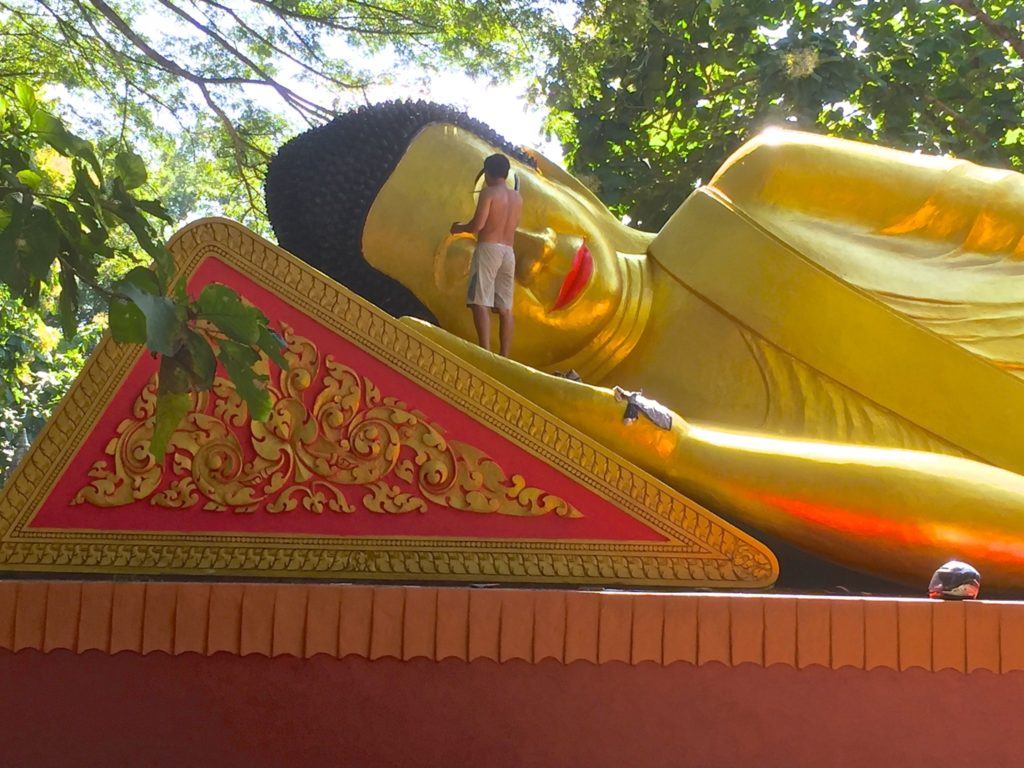
Even Buddha’s eyeliner needs a touch-up now and then
Cambodian Temples 101 (sort of)
Cambodian Temples were built from the late 6th century through the 12th century at a feverish rate of expansion that would have been the envy of Starbucks. The largest surviving concentrations of temples were built in the Angkor region where Siem Reap is located.
Cambodian temples were built for the usual reasons; conquerors showing off, civilizations being formed, deities being worshipped and displays of aesthetics. Many are called jungle temples in reference to their locations and the growth that overtook them after the demise of one civilization or the other. (Things can go to hell quickly when no one is left behind to pay the landscapers.)
As with other parts of the world with mysteriously extinct civilizations, laser technology is bringing new information that may upend long-held theories about what happened to civilizations who erected ancient temples and then seemingly vanished. Laser technology suggests that Angkor Watt was not overrun by invaders and abandoned but may instead have failed in part due to climate change and its effects on the water supply.
Angkor Wat – a city of temples
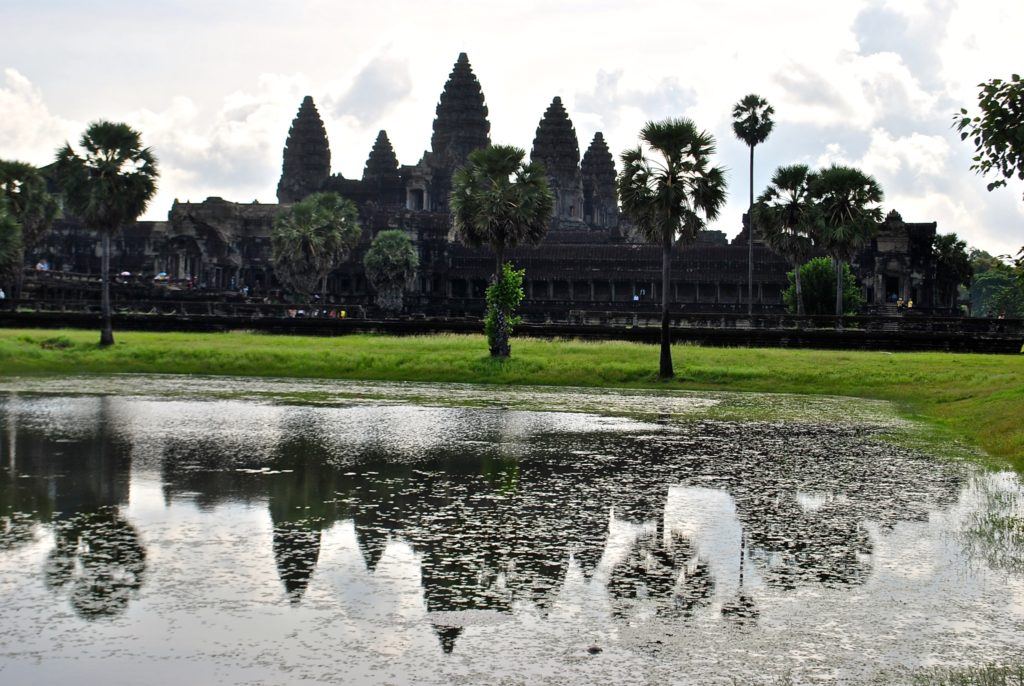
Angkor Wat the temple- the world’s largest religious monument
The city of Angkor Wat is about 154 square miles and includes forests, an assortment of temples and current inhabitants. It’s a UNESCO World Heritage Center and that standing has helped bring it back from near ruin. Being a UNESCO site is often a blessing/curse situation as it is for Angkor Wat.
The funds that came with the designation allowed the area to be restored and preserved. But the popularity of the designation also brought hordes of tourists who are taking a toll. From when it was constructed until modern times, Angkor Wat has been through a lot. It has suffered from a consuming jungle growth, having many of its antiquities looted and being filled with land mines by the Khmer Rouge.
To enjoy this most well-known of the Cambodian temples you need several hours and comfortable, sturdy shoes to wander around and explore the grounds. Blonde’s trip was with Viking River Cruises on their Magnificent Mekong itinerary and, as always, they provided an expert local guide.
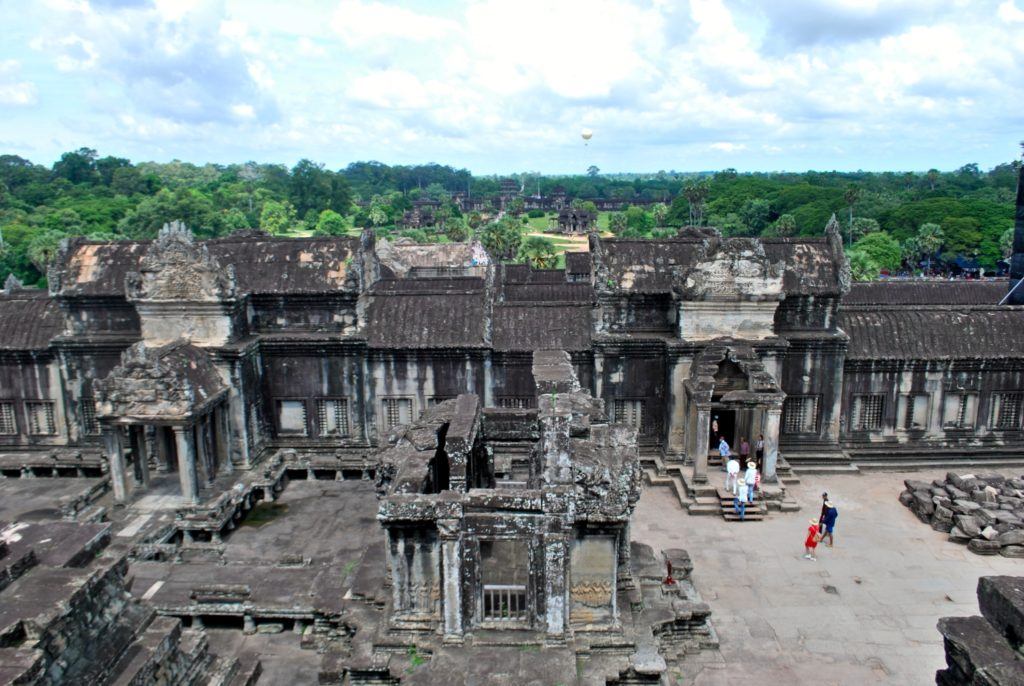
A view over some of the interior of Angkor Wat temple and the surrounding areas (this is a very steep climb up narrow stairs with zero safety precautions)
The guide also taught Blonde a new word she has just spent an inordinate amount of time trying to remember and Google. The word is palimpsest. Aside from being a great word to use in Scrabble, it means (in an archaeological context) a site with features from many different time periods.
The guide explained that Angkor Wat began in the 12th century as a temple to the Indian god Vishnu but over time it was converted to a Buddhist temple with the Hindu imagery remaining.
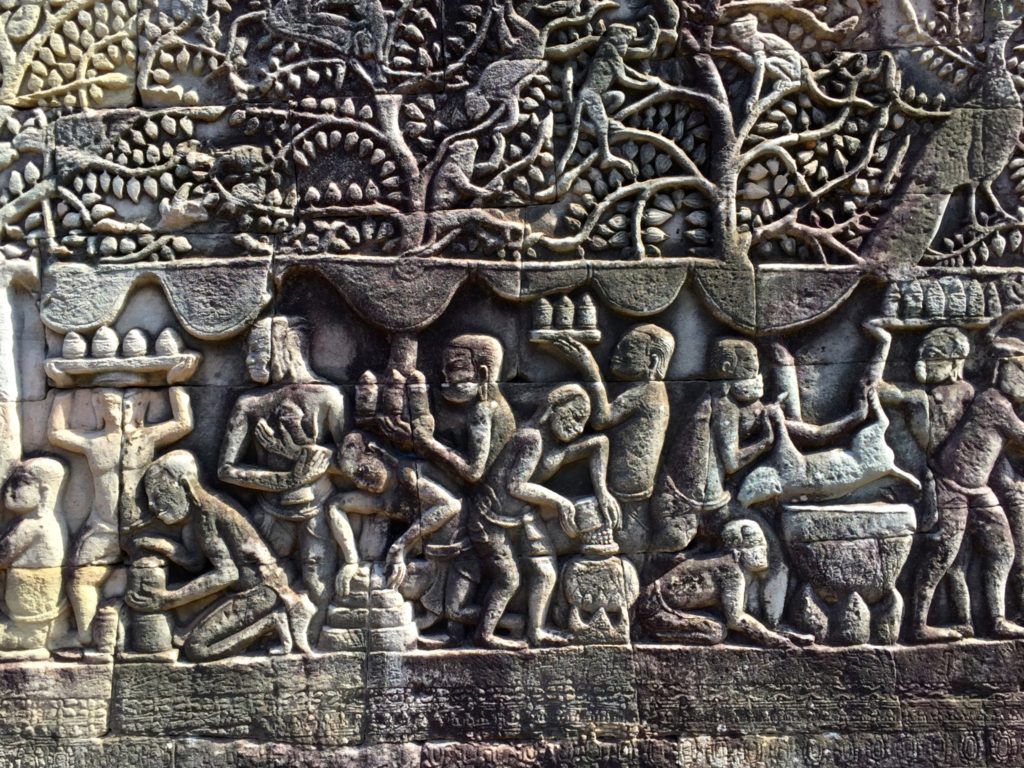
A bas-relief depicting meal preparations in daily life – bit of a crowded kitchen!
Our guide also explained a lot of the bas reliefs and there are enough for many days’ worth of explanations. They tend to fall into the categories of mythology, history and daily life. The number and intricacy of them are over-whelming but take the time to study at least a few of each category.
Ta Prohm
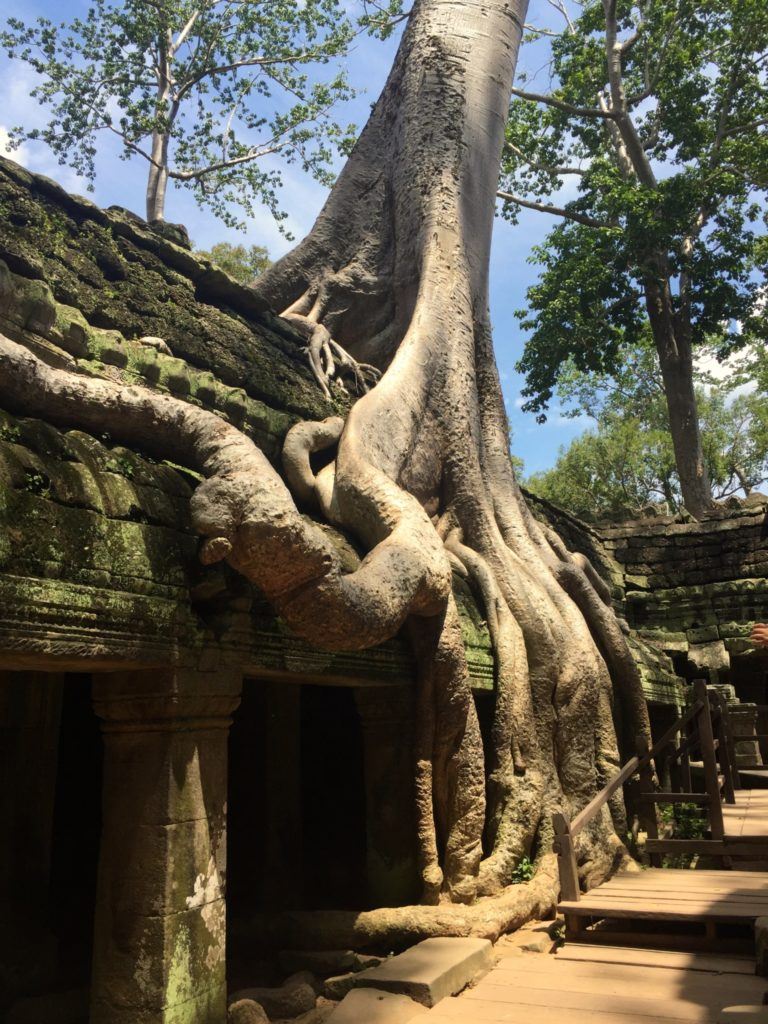
A tree that has overtaken part of one of the temples of Ta Prohm – with a soundtrack this could be a missing outtake from Fantasia (alternatively it could be Blonde’s foot before a pedicure).
Ta Prohm, also in the city of Angkor Wat, was built in the 12th and 13th centuries as both a temple and a monastery. It’s a complicated layout of concentric galleries, corner towers and gopuras which are towers over entryways. The temple was built to honor the mother of the king of the Khmer Empire, Jayavarman VII. He was a king who liked to build temples, highways, hospitals and other public structures that he probably didn’t envision being visited by tourists with selfie-sticks.
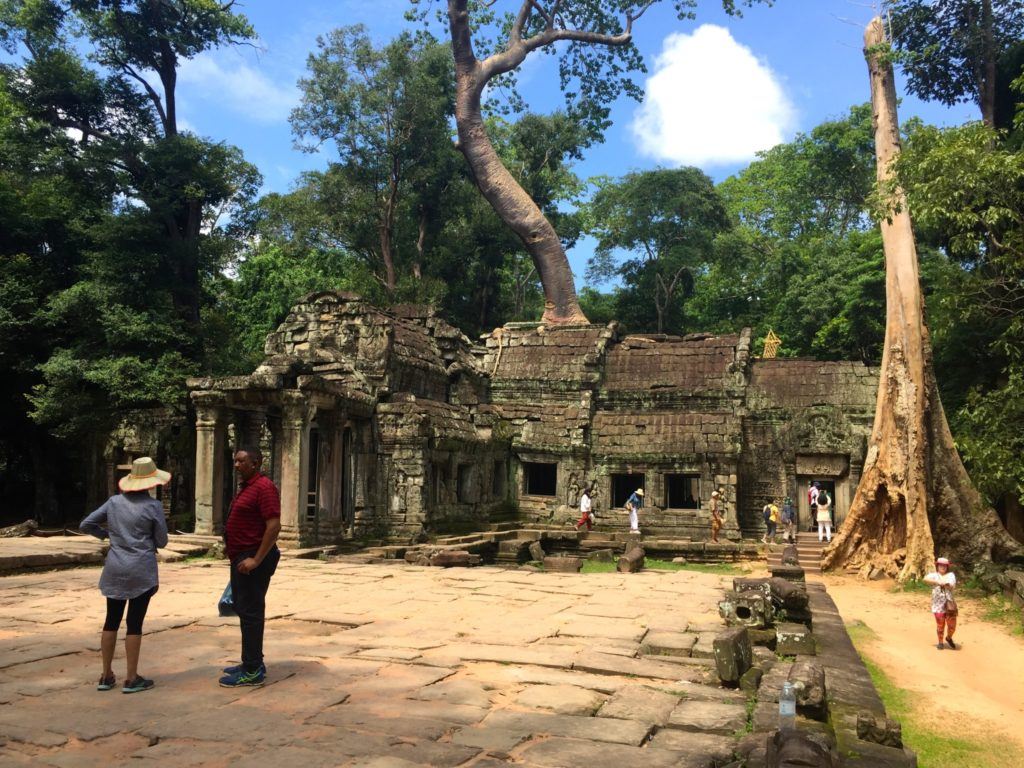
Pay attention to where you’re walking in Ta Prohm – it’s probably best to only see Cambodian hospitals from the outside.
Ta Prohm has been intentionally maintained in its “natural state” as it must have looked in the 19th century when it was rediscovered. Maintaining it this way has been complicated in terms of preventing further collapse and consistently clearing enough vegetation that it can be entered. (It’s kind of like that “no make-up” look that involves layers of make-up.)
Banteay Srei
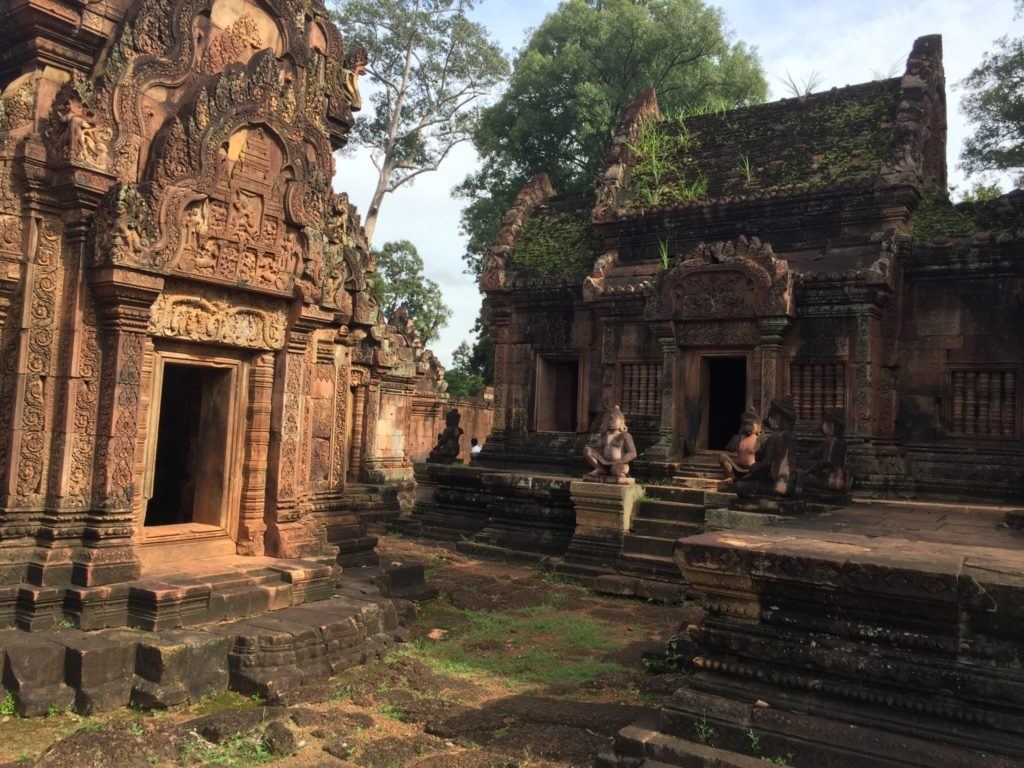
Banteay Srei
Banteay Srei is a beautiful 10th-century Hindu temple complex built primarily from deep red sandstone. Banteay Srei means Citadel of Women. It’s called this because it’s said that the reliefs on this temple are so delicate that they could only have been carved by the hand of a woman.
The well-preserved relief carvings on the central buildings depict scenes from ancient Hindu tales. Our guide knew so much about Hindu gods, allegories and symbolism that we were fascinated even as we realized that we would probably have zero recall later of what he said.
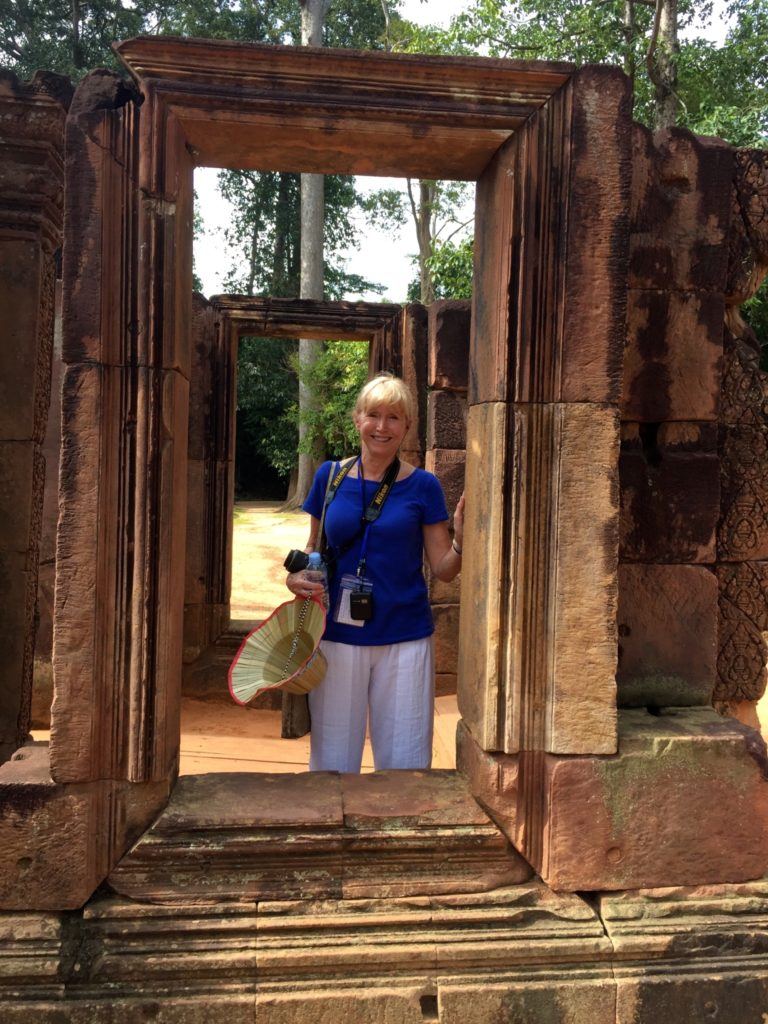
A sweaty tourist also constructed in roughly the 10th century (not the kind of woman who does intricate carvings)
Kampong Cham’s hilltop temples
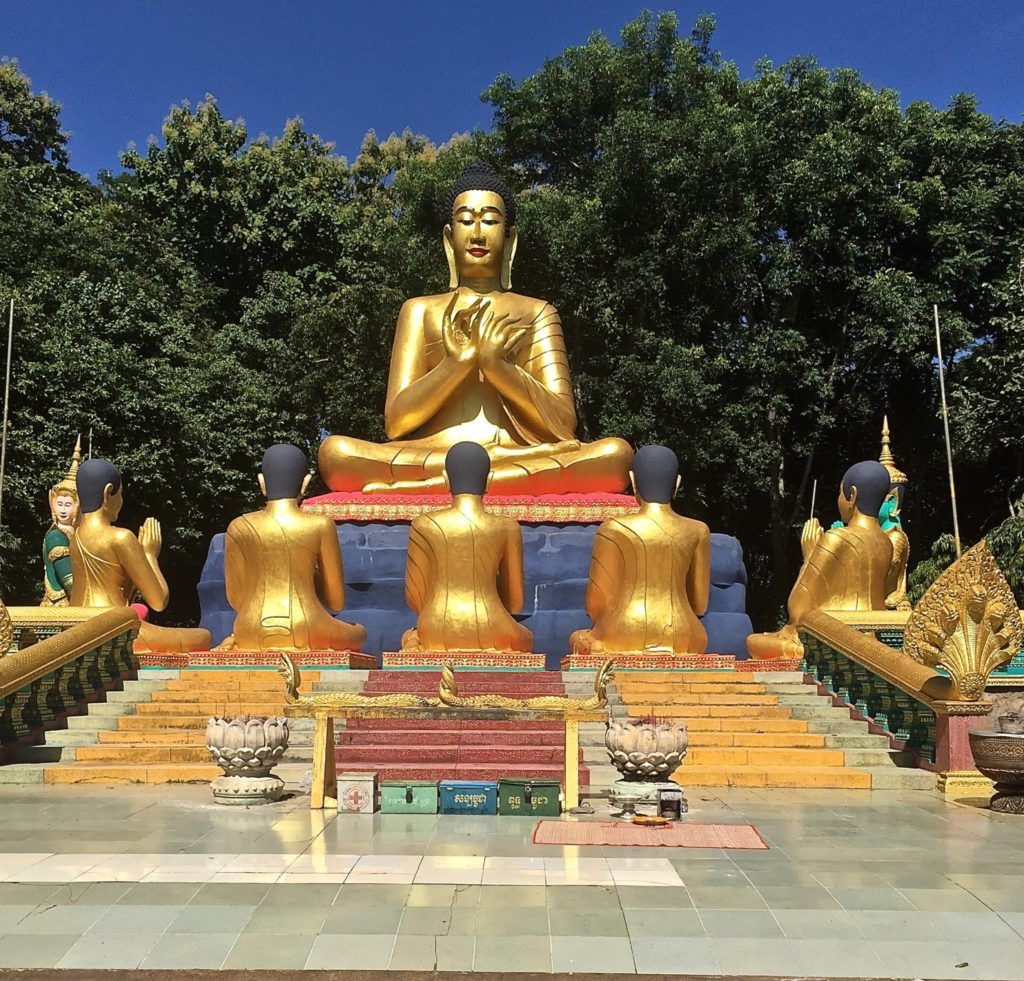
Buddha statuary at the base of the Twin Holy Mountains outside of Kampong Cham
We only spent a little while at this site outside of Kampong Cham but it was bright and a stark visual contrast to the ancient temples we had seen elsewhere in Cambodia.
From the top of the hill you can see across to Phnom Pros and Phnom Srey, Man Hill and Woman Hill. The story of the hills is that long ago the Cambodian kingdom was controlled by a queen named Srey Ayuthea. At that time, no man dared to ask the queen to marry him. So the queen chose one man she loved to marry her. (As part of the story he had to accomplish a myriad of impossible tasks so it wasn’t purely love – she was a practical girl too.)
All the women followed her lead and asked the men they chose to marry them. Later after the queen’s reign, women wanted to change this custom. (Why????) They invited men to take on the duty of proposing but the guys were hesitant to do so. Hence a contest was set up and a condition had to be met. If the men lost they would be put in charge of the whole proposal business whether they liked it or not.
The condition was to create a hill from the surrounding countryside from sunset to sunrise. The group that produced the taller hill got their wish. Men were sure they would win so they agreed. After both groups labored for many hours the women made a small lantern and put it up in the direction of the morning star. The men believed it was the morning star so they went to sleep. The women continued their work until the real morning star appeared. So the women won the competition. Since then men have asked women to marry them. No official report as to whether anything improved as a result of this change.
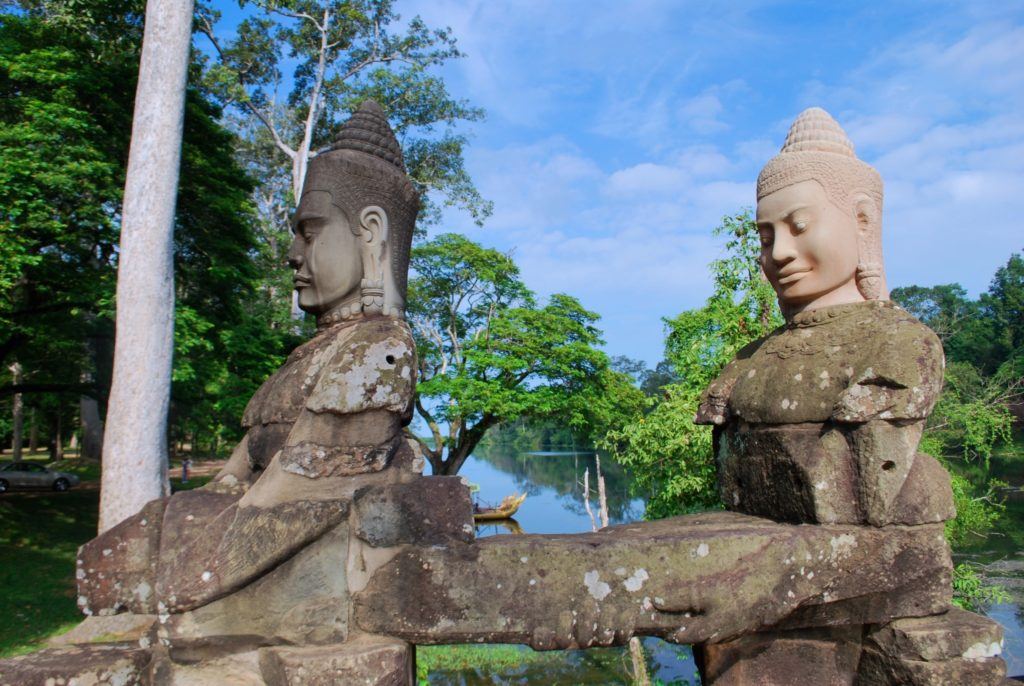
Statues on a bridge in Angkor Wat – clearly she’s done a better job of keeping her face clean than he has.
What to keep in mind when you visit Cambodian temples
Slather on your sunscreen and wear a hat and sunglasses. If you’re in Cambodia in August as Blonde was, know for certain that you will need a thorough shower and change of clothes before dinner. Take plenty of water to drink and don’t pass up a rest room opportunity even if it isn’t exactly optimal. Go for sensible footwear or spend the vast majority of the day in a deep state of painful regret. Women need sweaters or tops with at least short sleeves to go into temples – a scarf thrown around a sleeveless top won’t cut it. Men and women should cover their knees. Suspension of disbelief makes the legends more enjoyable (not a good time to be overly literal)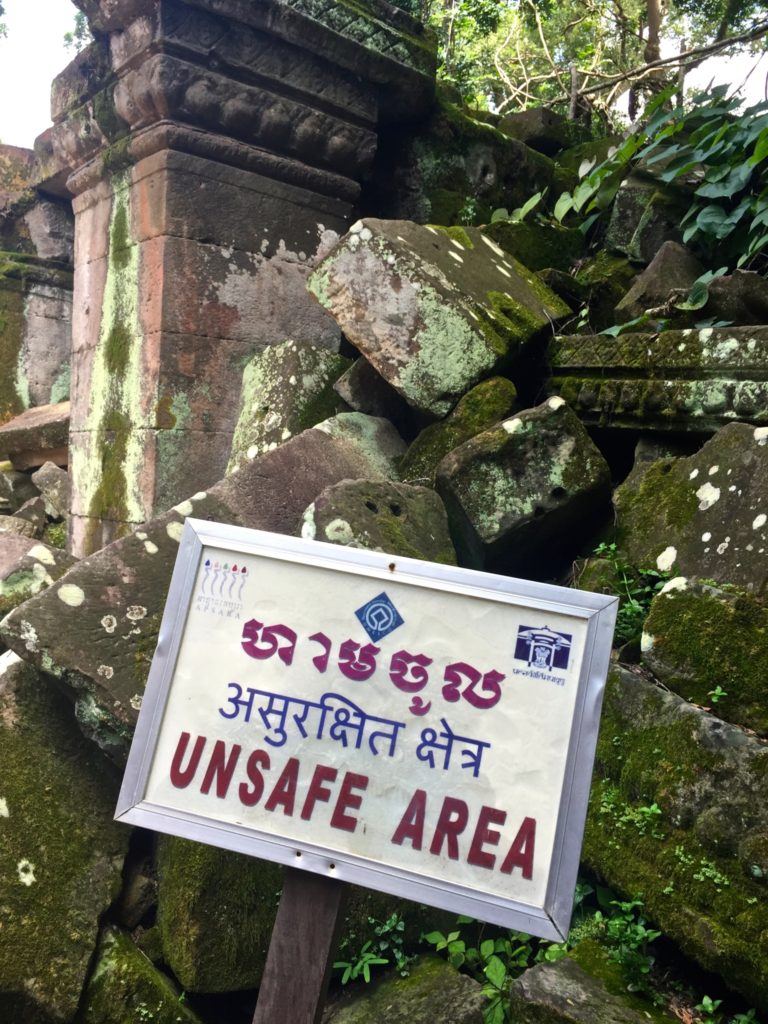
If you couldn’t have figured this out without the sign maybe you shouldn’t wander around the ancient temples at all.
The post Cambodia’s temples and their (abbreviated) history appeared first on Blonde Brunette Travel.







